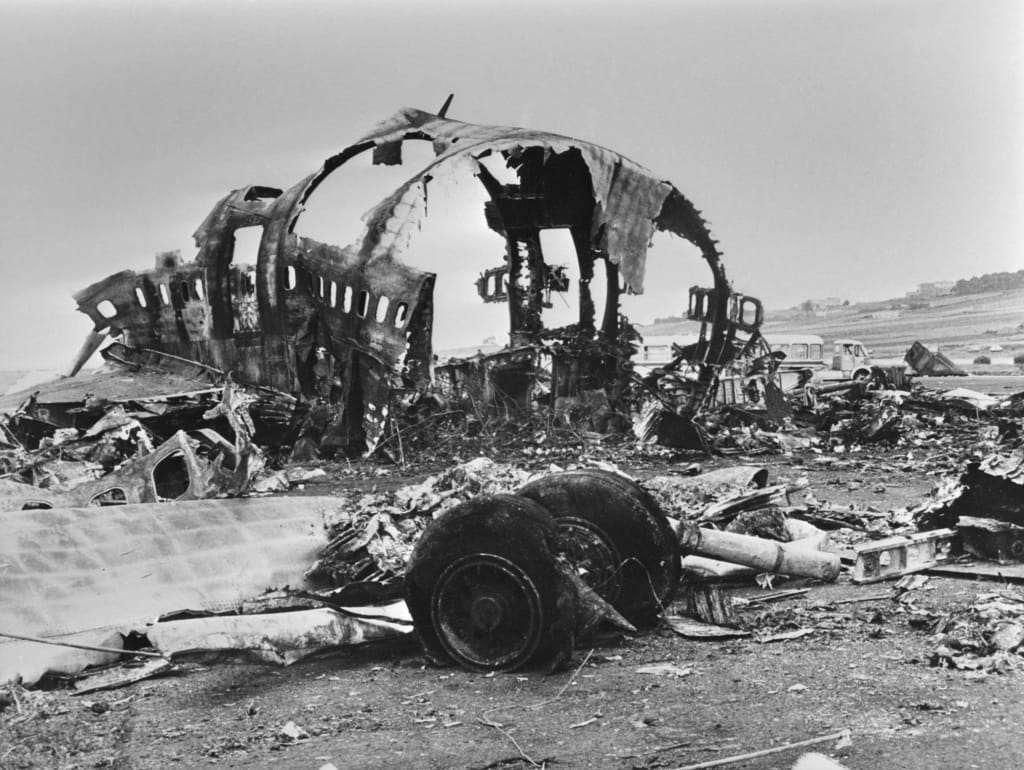Colliding in the Fog: The Tenerife Airport Disaster
World’s deadliest aviation disaster

On March 27, 1977, the world witnessed one of the deadliest aviation disasters in history at the Los Rodeos Airport (now Tenerife North Airport) in Tenerife, one of Spain's Canary Islands. The collision between two Boeing 747 aircraft, operated by Pan American World Airways (Pan Am) and KLM Royal Dutch Airlines, resulted in the loss of 583 lives. This catastrophic event, known as the Tenerife Airport Disaster, serves as a poignant reminder of the critical importance of effective communication, meticulous planning, and situational awareness in aviation.
The Canary Islands, a popular tourist destination, experienced an unexpected influx of visitors due to a bomb explosion at Gran Canaria Airport, which forced several flights to divert to Los Rodeos Airport. Among these flights were Pan Am Flight 1736 from Los Angeles and KLM Flight 4805 from Amsterdam, both bound for Gran Canaria.
As the Gran Canaria Airport reopened, air traffic control at Los Rodeos Airport faced the daunting task of managing a sudden surge in air traffic. Thick fog enveloped the runway, severely limiting visibility. Amidst the chaos, miscommunications and misunderstandings exacerbated an already tense situation.
The critical moment came when the KLM flight, under the command of Captain Jacob Veldhuyzen van Zanten, received clearance for takeoff while the Pan Am flight, captained by Victor Grubbs, was still taxiing on the same runway. Due to the poor visibility, neither crew could see the other aircraft.
Contributing Factors:
- Communication Breakdown: The cockpit voice recorder transcripts revealed a series of misunderstandings between the KLM crew and air traffic control. Miscommunication regarding taxi instructions and clearance for takeoff contributed to the collision.
- Cockpit Culture: The hierarchical cockpit culture prevalent at KLM, where the captain's decisions were rarely questioned, likely played a role in Captain van Zanten's premature decision to take off without proper clearance.
- Weather Conditions: The dense fog severely impaired visibility, making it challenging for pilots and air traffic controllers to maintain situational awareness.
- Airport Layout: The single-runway configuration at Los Rodeos Airport, coupled with limited ground radar coverage, added to the complexity of managing simultaneous departures and arrivals.
The collision resulted in a fiery inferno, engulfing both aircraft and claiming the lives of 583 people on board. Miraculously, 61 passengers aboard the Pan Am flight survived, primarily due to the location of the impact towards the rear of the aircraft and prompt rescue efforts.
Investigation and Reforms:
In the aftermath of the Tenerife Airport Disaster, aviation authorities conducted extensive investigations to determine the root causes and prevent similar tragedies. The findings prompted significant reforms in aviation safety protocols, including:
Standardized Communication Protocols: Improved standardized phraseology and communication protocols were introduced to enhance clarity and reduce the likelihood of misunderstandings between air traffic controllers and flight crews.
Cockpit Resource Management: Emphasis on cockpit resource management training aimed to foster a culture of open communication and collaboration among crew members, mitigating the risks associated with hierarchical cockpit dynamics.
Airport Infrastructure Upgrades: Investments were made to enhance airport infrastructure, including the implementation of ground radar systems and the expansion of runway capacity, to improve operational efficiency and safety.
The Tenerife Airport Disaster stands as a somber reminder of the catastrophic consequences that can arise from a combination of human error, environmental factors, and systemic flaws in aviation infrastructure and communication. The lessons learned from this tragedy continue to shape modern aviation practices, reaffirming the industry's unwavering commitment to safety and the preservation of human life.
The Tenerife Airport Disaster remains etched in the annals of aviation history as a tragic reminder of the importance of effective communication, meticulous planning, and unwavering commitment to safety in air travel. As we honor the memory of the lives lost, let us remain vigilant in our pursuit of advancements in aviation safety to ensure that such a tragedy never occurs again.
About the Creator
Enjoyed the story? Support the Creator.
Subscribe for free to receive all their stories in your feed. You could also pledge your support or give them a one-off tip, letting them know you appreciate their work.






Comments
There are no comments for this story
Be the first to respond and start the conversation.